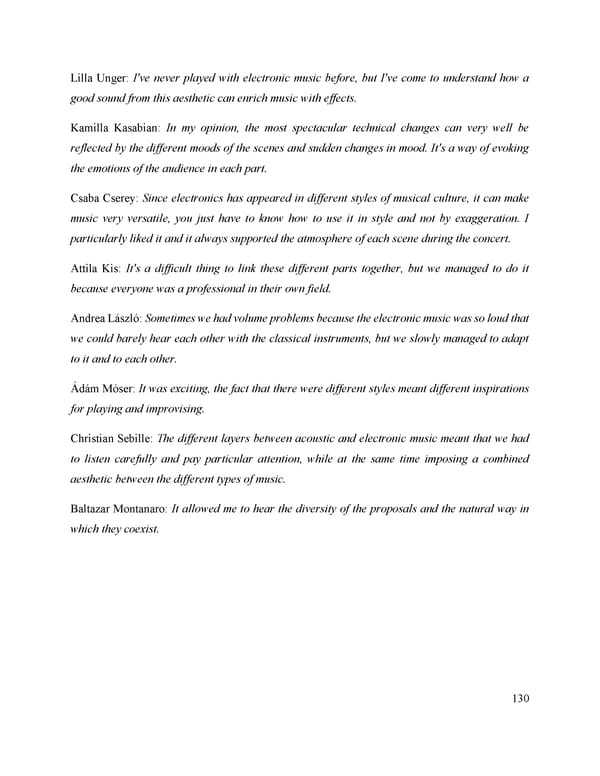Lilla Unger: I've never played with electronic music before, but I've come to understand how a good sound from this aesthetic can enrich music with effects. Kamilla Kasabian: In my opinion, the most spectacular technical changes can very well be reflected by the different moods of the scenes and sudden changes in mood. It's a way of evoking the emotions of the audience in each part. Csaba Cserey: Since electronics has appeared in different styles of musical culture, it can make music very versatile, you just have to know how to use it in style and not by exaggeration. I particularly liked it and it always supported the atmosphere of each scene during the concert. Attila Kis: It's a difficult thing to link these different parts together, but we managed to do it because everyone was a professional in their own field. Andrea László: Sometimes we had volume problems because the electronic music was so loud that we could barely hear each other with the classical instruments, but we slowly managed to adapt to it and to each other. Ádám Móser: It was exciting, the fact that there were different styles meant different inspirations for playing and improvising. Christian Sebille: The different layers between acoustic and electronic music meant that we had to listen carefully and pay particular attention, while at the same time imposing a combined aesthetic between the different types of music. Baltazar Montanaro: It allowed me to hear the diversity of the proposals and the natural way in which they coexist. 130
 Lost Analogue: Exploring Film, Music, and Interdisciplinary Methods in Education Page 130 Page 132
Lost Analogue: Exploring Film, Music, and Interdisciplinary Methods in Education Page 130 Page 132